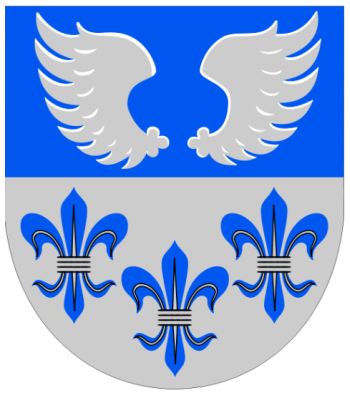Liljendal: Difference between revisions
Knorrepoes (talk | contribs) No edit summary |
Knorrepoes (talk | contribs) m (Text replace - "[[Literature" to "{{media}} [[Literature") |
||
| Line 20: | Line 20: | ||
The wings and divided shield are derived from the arms of the barons of Berendes, who named their estate Liljendal in the 17th century. The village developed around the estate. The fleur-de-lis are a canting element for Liljendal. | The wings and divided shield are derived from the arms of the barons of Berendes, who named their estate Liljendal in the 17th century. The village developed around the estate. The fleur-de-lis are a canting element for Liljendal. | ||
{{media}} | |||
[[Literature]] : Pirinen, K. Local coats of arms in Finland (Suomen kunnallisvaakunat), Vantaa, 1982, 216 p. | [[Literature]] : Pirinen, K. Local coats of arms in Finland (Suomen kunnallisvaakunat), Vantaa, 1982, 216 p. | ||
Revision as of 00:51, 9 July 2014
| Heraldry of the World Civic heraldry of Finland |
LILJENDAL
Region : Uusimaa (2009-2011 (Itä-Uusimaa)
Former province : 1997-2009 Etelä-Suomen, until 1997 Uusimaa
Incorporated into : 2010 Loviisa
Official blazon
Kilpi sini-hopeakatkoinen, yläkentässä kaksi hopeista siipeä, alakentässä kolme sinistä liljaa asetettuina 2 + 1.
Origin/meaning
The arms were officially granted on September 14, 1954.
The wings and divided shield are derived from the arms of the barons of Berendes, who named their estate Liljendal in the 17th century. The village developed around the estate. The fleur-de-lis are a canting element for Liljendal.
Contact and Support
Partners:
Your logo here ?
Contact us
© since 1995, Heraldry of the World, Ralf Hartemink 
Index of the site
Literature : Pirinen, K. Local coats of arms in Finland (Suomen kunnallisvaakunat), Vantaa, 1982, 216 p.











